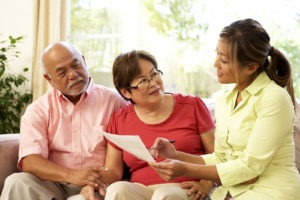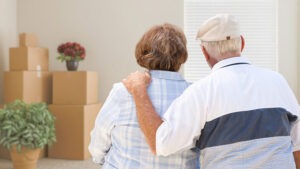We have all seen and heard the commercial with a senior lying on the ground saying, “I’ve fallen, and I can’t get up!” and thus, our minds instantly go to a monitoring system like what is advertised in that commercial. Yet, as time and technology has advanced, there are many other aspects to helping a senior to stay safe, and also there are new developments in helping to monitor them in case something goes wrong.
Before we start comparing systems, we want to begin with some key essentials.
- There is nothing more dangerous for a senior who has a home that is full of throw-rugs, cords that are not anchored properly and clutter. First and foremost- clear the home from anything that may hinder movement in the home.
- There should be three different types of lighting in a home.
- Overhead lighting that can be turned on to brighten a room
- Ambient Lighting- like table-lamps and for general lighting
- Task lighting- for kitchens, workstations and for reading
- The bathroom should have proper grab bars and non-slip surfaces installed.
- Make sure that outside, slippery surfaces, such as decks and walkways are cleaned to avoid falling outdoors.
Mobility in the home can also be hindered by isolation, lack of exercise, improper nutrition and hydration. It is important that a proper “inventory” of your senior loved ones’ daily habits are considered.
Given all the above- having a home medical alert system and being proactive about having it can be a huge benefit for a senior who lives at home. Sadly, most alert systems don’t go into a home until there has already been a disaster. In addition, by not having one and an accident happens, we have heard stories of seniors being disabled for days on end before they were found from a fall.
So how do you choose a good system?
According to Consumer Reports, there are three major considerations:
- Do you want a home based (land line) system or a mobile monitoring system?
Tying a medical alert to a land line will only be as good as when a senior is at home in their house. It will not monitor them outside, or when they are traveling.
Because technology has advanced, we are huge fans of mobile monitoring systems, because wearing a tag or bracelet will follow your loved one no matter where they are- through GPS technology. That means no matter what happens to Mom or Dad, they are monitored- inside and out.
- Choosing a “monitored” system. In other words, when that button that a senior wears is pushed, will they reach a dispatching center? There are also systems that will call a friend or loved one if something happens, but of course those are only as good as when an individual is reachable.
Of course, having a monitored system is more expensive, but it is also peace of mind that no matter what time or place that something happens to your senior loved one, they will always have someone who will answer their distress call.
- A Fall Detection Feature: Of course, that is one of the main reasons why a senior should have a system in place in their home, and technology today is fairly good, (not 100% but getting better all the time) at detecting a fall in the home.
Please check out the latest information on Consumer Reports. They list certain screening systems that are only monitored, are cell operated. What we learned was that all of them except for one have a Fall Detection feature- which are asterisked on our list below. Consumer Reports has compared nine systems that they rate. You can read more about these products on their site, but we list them here in order of their rating:
- Bay Alarm Medical*
- Great Call Lively Mobile*
- Life Alert
- Life Station*
- Medical Alert*
- Medical Guardian*
- Mobile Help*
- Philips Lifeline*
- Rescue Alert*
We admonish you one thing. DO NOT wait for an emergency to happen. Put a system in place before something happens. You’ll be glad you did.











